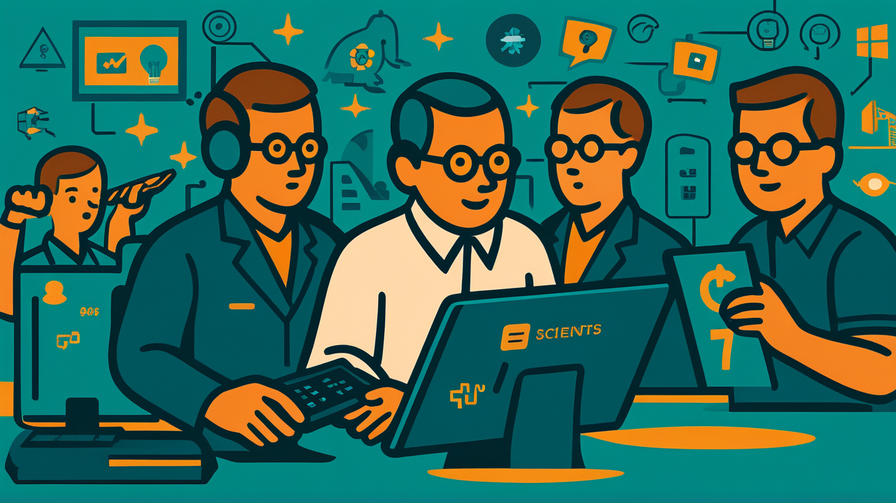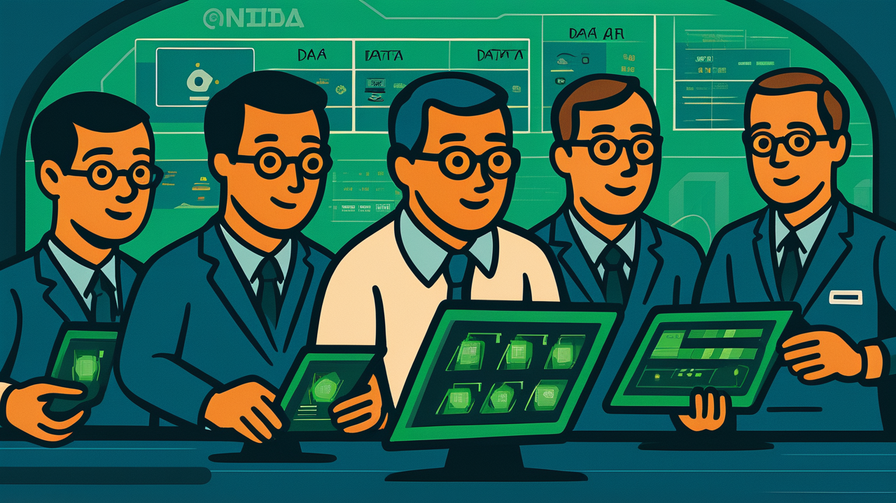[Disclaimer] This article is reconstructed based on information from external sources. Please verify the original source before referring to this content.
News Summary
The following content was published online. A translated summary is presented below. See the source for details.
NVIDIA has released major updates to RAPIDS, their technology that makes data science dramatically faster by using graphics cards (GPUs) instead of regular processors. The latest version introduces three key improvements. First, it can now process datasets larger than a computer’s video memory by streaming data in chunks, similar to how Netflix streams movies instead of downloading them entirely. This allows scientists to analyze terabytes of data on regular workstations. Second, it provides “zero-code-change” acceleration, meaning existing data science programs run faster without any modifications – like upgrading a car engine without changing how you drive. Support vector machines, important algorithms for classification and prediction, now run significantly faster automatically. Third, it introduces a unified system for graph neural networks, which analyze connections between things (like social networks or molecular structures). The update also supports Python 3.13 and prepares for next-generation NVIDIA hardware. These improvements make advanced data analysis accessible to more researchers and students by reducing the need for expensive supercomputers.
Source: NVIDIA Developer Blog
Our Commentary
Background and Context

To understand why this matters, imagine trying to count every grain of sand on a beach using just your fingers versus using a thousand helpers working simultaneously. That’s the difference between using a regular processor (CPU) and a graphics card (GPU) for data science. Graphics cards were originally designed to render video game graphics by doing many simple calculations at once – perfect for data analysis too.
Data science involves analyzing massive amounts of information to find patterns and make predictions – like how Netflix recommends shows or how scientists predict weather. Traditionally, this required expensive supercomputers. RAPIDS changes that by harnessing the power of gaming graphics cards that many people already own.
Expert Analysis
The “streaming” feature is particularly revolutionary. Previously, if your dataset was bigger than your graphics card’s memory (typically 8-24GB), you couldn’t use GPU acceleration. Now, RAPIDS processes data in chunks, like eating a large pizza slice by slice instead of trying to fit it all in your mouth at once.
The “zero-code-change” aspect removes a major barrier to adoption. Imagine if every time you got a faster internet connection, you had to rewrite all your apps – nobody would upgrade! By making existing code automatically faster, RAPIDS lets data scientists benefit immediately without learning new programming languages or rewriting years of work.
Additional Data and Fact Reinforcement
The performance improvements are staggering. Tasks that previously took hours can now complete in minutes, with some operations seeing 100x speedups. For context, that’s like reducing a 10-hour flight to just 6 minutes. This speed enables entirely new types of analysis previously considered impossible.
The technology is already transforming industries. Financial firms use it to detect fraud in real-time, analyzing millions of transactions per second. Medical researchers process genomic data to find disease patterns. Climate scientists can run more detailed weather simulations. Even social media companies use similar technology to show you relevant content.
Related News
This trend toward GPU acceleration extends beyond NVIDIA. AMD and Intel are developing competing technologies. Major cloud providers like Amazon and Google offer GPU-powered data science platforms. Universities are updating computer science curricula to include GPU programming.
The democratization of high-performance computing mirrors other tech trends. Just as smartphones put supercomputer power in everyone’s pocket, GPU acceleration puts data center capabilities on student desktops. This could revolutionize fields from astronomy to zoology by making advanced analysis accessible to smaller research teams.
Summary

NVIDIA’s RAPIDS update represents a major leap in making data science faster and more accessible. By using graphics cards to accelerate calculations, supporting larger datasets through streaming, and requiring no code changes, this technology opens advanced analytics to students and researchers worldwide. As data becomes central to every field of study, tools like RAPIDS ensure that computational power won’t be a barrier to discovery.
Public Reaction
Data scientists celebrate the performance improvements, sharing benchmark results showing dramatic speedups. Students appreciate being able to run complex analyses on gaming laptops. Some researchers worry about becoming too dependent on proprietary NVIDIA technology. Environmental groups praise the energy efficiency of GPU computing compared to traditional data centers.
Frequently Asked Questions
Q: Do I need an expensive graphics card to use RAPIDS?
A: A mid-range gaming GPU (like RTX 3060 or better) can provide significant speedups. You don’t need the most expensive cards to see benefits.
Q: Is this only for professional data scientists?
A: No! Students learning data science can use RAPIDS to experiment with larger datasets and complete assignments faster. Many online tutorials are available.
Q: How is this different from regular computing?
A: Regular processors handle tasks one by one, like a single cashier. GPUs process thousands of tasks simultaneously, like having thousands of cashiers working at once.


